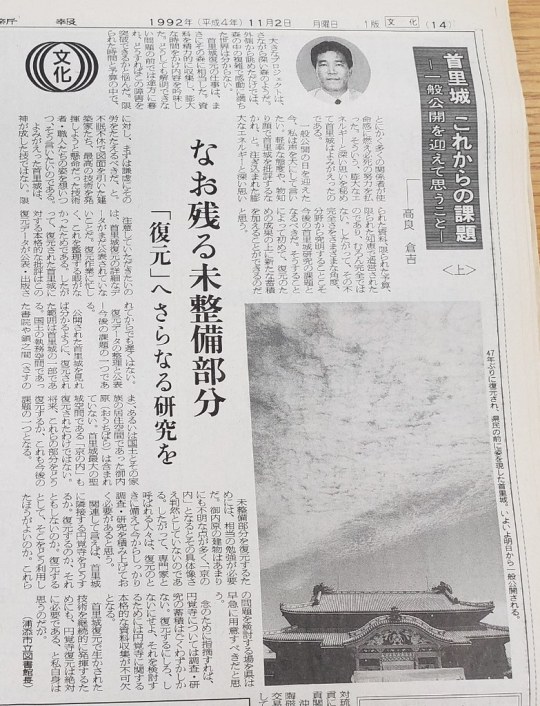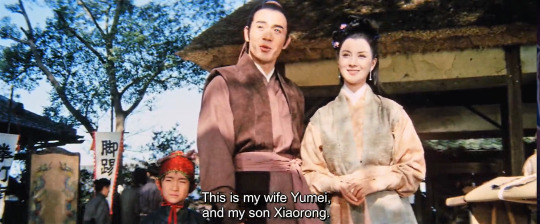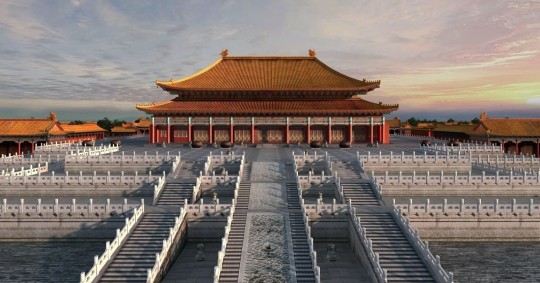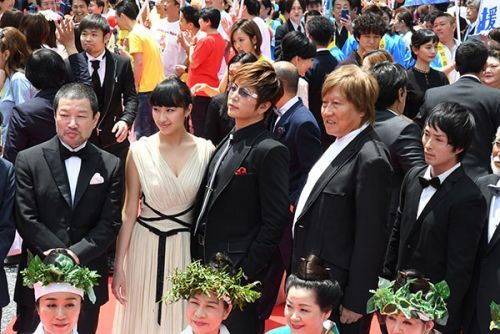#Ryukyu Shimpo
Text
https://english.ryukyushimpo.jp/2021/06/08/33749/
Shoko Ahagon’s legacy of the Ie Land Struggle and Solidarity Dojo passed on to Ie Elementary School students
May 31, 2021 Ryukyu Shimpo
By Mitsue Chinen
On May 25, the 6th graders of Ie Elementary School learned about peace at the Danketsu Dojo (solidarity training center) in Maja, Ie Village, and in their classrooms at Ie Elementary School. The 30-hour learning opportunity raised awareness of the tragic Invasion of Ie Shima during WWII and elevated the children’s desire for peace. Director of Education Tsunenobu Uchima served as the lecturer and shared with the children the historical background of Danketsu Dojo.
Uchima explained, “Danketsu Dojo was founded in 1970 in Maja by the late Shoko Ahagon and others who fought in the Land Struggle in Ie Village under U.S. rule. The dojo served as a base for resistance against land confiscation and U.S. military exercises, and as a place to train successors in the struggle to take back land rights.” Using photos and panels, Uchima further explained, “The ‘Ie Island Land Protection Association’ advanced the fight by petitioning the U.S. government and organizing protests.”
Ryo Kurashita said, “It’s scary to think what would have happened to Ie Island if Shoko Ahagon hadn’t fought back.” Hinami Tanahara added, “If Mr. Ahagon hadn’t acted, I don’t think Ie Island would be here today, so I’m grateful.”
Makoto Hirata, a 6th-grade teacher, said, “There is a lack of knowledge of who started the war and why. [The children] study history in the 6th grade, so I hope to teach them the preciousness of peace.”
Uchima said, “Wars don’t start overnight. I want [the students to] read history books and newspapers, be curious, and learn about their world.” To conclude their learning, the students are scheduled to put on a play about peace and their local heroes.
(English translation by T&CT and Monica Shingaki)
#Ryukyu Shimpo#Mitsue Chinen#Monica Shingaki#Shoko Ahagon#Ahagon Shoko#Ie Island#Okinawa#Okinawan#United States#US Military#News#History
1 note
·
View note
Link
August 21, 2020 Ryukyu Shimpo
During a mass outbreak of the novel coronavirus occurred on the U.S. Navy’s USS Theodore Roosevelt en route, the U.S. military considered a plan to transport about 3,000 crew members to U.S. military bases in Okinawa. The crew eventually disembarked in Guam, but they have been withdrawn, so there has been no talk of remedying the situation.
By this stage, bringing a large group of people, including people who test positive for the coronavirus, to other countries’ territories should be considered an absolutely unacceptable option. Clearly the U.S. military’s perception is that it can freely use Okinawa as if it was U.S. territory. The continuation of such circumstances is due to nothing other than the weak attitude of the Japanese central government, which has come to accept the U.S. military’s stance.
The Japanese government must correct the U.S. military’s designs in terms of the planned transport of these crew members to Okinawa. It is essential that we strongly protect so that coronavirus infection is not brought in by way of the U.S. military.
According to an investigative report from the U.S. Navy, three crew members were confirmed to have the novel coronavirus on March 24, when the USS Roosevelt was en route from Vietnam to Guam in the western Pacific Ocean. In considering an isolation location for the crew members, the 7th Fleet Headquarters calculated that a total of 3,000 rooms could be secured on Marine Corps military bases in Okinawa, such as Futenma Air Station, and initially planned to transport crew members from the aircraft carrier to Okinawa by air route.
There was a possibility that the crew members would be transported from the USS Roosevelt to Okinawa and settle in prior to acceptance from the Japanese government.
Under Article 9 of the U.S.-Japan Status of Forces Agreement, U.S. military personnel are allowed special privileges relating to emigration and immigration, and U.S. military troops may directly enter military bases across Japan by U.S. military aircraft, exempt from Japan’s medical inspections.
In whatever manner Okinawa and Japan attempt to prevent the coronavirus being brought in over national boarders, the presence of the U.S. military bases is an unfortunate hole in the countermeasures. Initially, the U.S. military made no public announcement about the numbers of people infected within Okinawa. Also, circumstances, such as the infection status on military bases due to U.S. troops entering Japan and the medical care set-up, have been kept entirely in a black box.
Read more...
http://english.ryukyushimpo.jp/2020/08/26/32581/
#Ryukyu Shimpo#Okinawa#US Military#US Servicemembers#Coronavirus#Covid#Opinion Piece#Japan#Article 9
32 notes
·
View notes
Text
Shuri Castle: Topics Going Forward, Thoughts as We Approach the Public Opening
Shuri Castle: Topics Going Forward, Thoughts as We Approach the Public Opening

As I continue my reading of newspapers from around the time of the first postwar restoration of Shuri castle in 1989-1992, I came across a short essay by Takara Kurayoshi 高良倉吉 which I found interesting and which I thought I might share. Takara (b. 1947), at that time the head of the Urasoe City Libraryand now Professor Emeritus, University of the Ryukyus, is one of the top big-name scholars of…
View On WordPress
0 notes
Photo


Cobra Kai: The Secret Miyagi Scroll
I’m not sure if you watch this series but I’ve been a fan of Karate Kid series since I was a kid, and especially like Part II where the story takes place in Okinawa. It’s one reason that I wanted to go Japan. The Okinawa arc in Season 3 of the sequel, Cobra Kai series is perhaps my favorite part of them all and there’s one part that intrigues me most. The secret Miyagi Scroll.
According to Chozen, the former enemy of Daniel (main character), Miyagi (Daniel’s Sensei) ancestors once had to defend Okinawa from Japanese invaders and there was no option to kill, so Miyagi instructors developed a system using a secret pressure points to render their enemies helpless. So a reason why Miyagi hid it from Daniel is because in the modern world, there is no need to use such lethal karate, especially for tournaments.
The interesting part is, people might wonder, wait, aren’t Okinawans Japanese? What does he mean by defending Okinawa from Japanese invasion? We do know that Miyagi is descended from Shimpo Miyagi, who passed out on his boat off the coast of Okinawa while fishing and drinking sake so ended up on the coast of China and returned to Okinawa ten years later with his Chinese wife and children, along with a knowledge of karate which he learnt in China.

(Picture is just for illustration purposes, it’s what I imagined Shimpo Miyagi to be like with his wife. It’s from Zatoichi Meets the One-Armed Swordsman (1971))
But what about Okinawans as a whole? Historically, they were once known as Ryukyu Kingdom, which was ruled as a tributary state of China. The Ryukyu Kingdom became a vassal state of the Satsuma Domain of Japan after the Invasion of Ryukyu in 1609 and later annexed to form Okinawa Prefecture in 1879 where the Ryukyuan monarchy was integrated into the new Japanese nobility.
What led to the invasion of Ryukyu is that in 1590, Toyotomi Hideyoshi asked the Ryukyu Kingdom to aid in his ambitious campaign to conquer Korea after which he intend to move into China. But since Ryukyu Kingdom was a tributary state of the Ming Dynasty of China, the request was refused. Later, the Tokugawa Shogunate which succeeded Hideyoshi authorized the lords of Satsuma to conquer Ryukyu, after which, it allowed the Rkyukyu Kingdom to maintain dual tributary relations to both the Tokugawa Shogunate and the Chinese court.
So we now know that Miyagi’s ancestors were Ryukyu Kingdom fighters. It’s kind of interesting when you merge a fictional film with actual history. This is one reason why Okinawa is one place in Japan that doesn’t exactly look like Japan, especially in terms of architecture like temples and shrines where you’ll find that their designs are more elaborate and colorful akin to that of Chinese temples and shrines, some even have a mix of Japanese and Chinese architectural style of designs.

Shuri Castle, Okinawa which was the palace of the Ryukyu Kingdom.

Chinese Palace
#cobra kai#karate kid#mr miyagi#pat morita#shimpo miyagi#okinawa#ryukyu kingdom#japan#chozen toguchi#yuji okumoto#daniel larusso#ralph macchio#zatoichi#shuri castle#toyotomi hideyoshi#tokugawa ieyasu#tokugawa shogunate#ming dynasty
48 notes
·
View notes
Text
Apparently Miya’s birthday (February 22nd) is Cat Day in Okinawa!
#this is extremely important information#sk8#sk8 the infinity#sk8 miya#chinen miya#cats#my post#also apparently his name is miya because it sounds like a cat noise
11 notes
·
View notes
Text
田丸D

戦争の教訓生かせ ロシア「悪魔視」に疑問<乗松聡子の眼>

©The Ryukyu Shimpo 本ウェブサイト内に掲載の記事・写真の無断転用は一切禁じます。すべての著作権は琉球新報社または情報提供者にあります。


たまるブログ
0 notes
Text
ろうそく能 幻想の舞台 新報ホール、きょうまで
#能楽 [Ryukyu Shimpo]17日まで。「ろうそく能」の県内公演は初。観世流シテ方能楽師の坂井音雅さん(重要無形文化財「能楽」保持者)と坂井音隆さん(同)、狂言師の野村萬斎さん(同)らが出演し、観客を幻想的な世界に誘った。 能「紅葉狩・鬼揃」の前には、本舞台と ...
1 note
·
View note
Text
[メディア掲載] 琉球新報WEB版 / The article about Shurijo Castle (from Okinawan Newspaper “Ryukyu Shimpo”)
琉球新報 WEB版 2020年10月29日(木)付の記事でアラカキヒロコが対談に参加しています。
30代、首里城に甘えていたかも…「再建ゆっくりでいい」【WEB限定】
https://ryukyushimpo.jp/news/entry-1215455.html
・琉球新報 首里城関連特集
「首里城消失1年」https://ryukyushimpo.jp/special/shurijo.html
「首里城 私たちのリアル」https://ryukyushimpo.jp/pages/entry-1216140.html
0 notes
Text
[Ryukyu Shimpo] フジロックに出演した玉城知事、ボブ・ディランの歌詞を替え ...
[Ryukyu Shimpo] フジロックに出演した玉城知事、ボブ・ディランの歌詞を替え …
[Ryukyu Shimpo] フジロックに出演した玉城知事、ボブ・ディランの歌詞を替え …

【新潟で当山幸都】沖縄一色のトークライブが開かれた28日の「フジロックフェスティバル」。玉城デニー知事は洋楽カバーを2曲歌い上げて会場 …
[Ryukyu Shimpo]
続きを読む →→→
View On WordPress
0 notes
Text
Transporting Lumber for the Restoration of Shuri castle
Transporting Lumber for the Restoration of Shuri castle

Kobikishiki procession of logs from Kunjan passing through the streets of Shuri, on the way to the castle site. Photo from Ryûkyû Shimpô newspaper, 3 Nov 1989.
Reading scholarship by Tze May Loo and Gerald Figal, the only work I know of in English on the history and significance of Shuri castle (Sui gusuku, Ufugusuku), I found that while both tell fascinating, touching, and profoundly informative…
View On WordPress
1 note
·
View note
Photo

RYUKYU SHIMPO: 330,000 people, a variety of events enjoyed Okinawa International Movie Festival closes
Read the full article translation here!
#gackt#gacktcamui#Gackt Camui#gackt news#gackt article#movie#gackt movie#karanukan#movie karanukan#gackt karanukan#gacktitalia#translation
13 notes
·
View notes